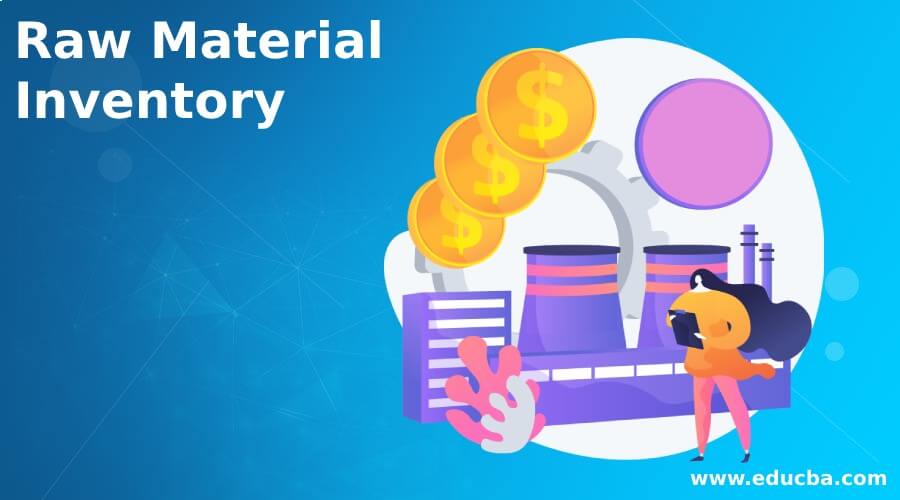Updated July 14, 2023

What is Raw Material Inventory?
The raw material inventory can be defined as the initial input materials for producing work in process inventory and finished goods. They can be purchased from the wholesale market, and the marketplace where the traders facilitate the buying and sale of the raw materials is termed the factor market.
Explanation
The business can categorize inventories into three types: raw materials, work in process, and finished goods. Raw materials are manufacturing businesses’ initial inputs to initiate production for work-in-process and finished goods inventory. Therefore, the manufacturing business performs the budgeting of line items in detail, which further requires adopting a special framework incorporated on the accounting front in the balance sheet and the income statement.
Raw materials can be termed items in stock but have not been utilized for work-in-process and finished goods production. The raw materials can be bifurcated into direct materials and indirect materials. Direct materials can be termed components that form part of the final product.
Indirect materials are raw materials that do not directly contribute to the final finished goods but serve as inputs for the work-in-process inventory. These materials are consumed during the production process. Indirect materials generally comprise lubricants, oils, rags, and light bulbs.
How to Calculate Raw Material Inventory?
The computation of raw materials varies based on their nature and type, such as direct and indirect materials. The raw materials are generally recorded with a debit treatment to the asset account for the inventory and credit treatment in the liabilities account for the account payable. The direct materials are regarded as the debit in the work-in-process inventory and similarly as a credit to the asset account of raw materials.
The indirect materials are recorded as a debit to the factory overhead account and as a credit to the raw materials accounts. Therefore, to compute the final balance of the raw materials, take up the beginning balance. Next, deduct the raw materials utilized for either work in process or the finished items inventory. Finally, add any purchase of raw materials for the accounting period to arrive at the ending balance.
The following would be the formula for the raw materials inventory: –
Example of Raw Material Inventory
Let us take the example of a manufacturing business ABC Corp. The business had raw materials amounting to $32,000. The Business utilized raw materials amounting to $23,000 in finished goods. Additionally, the business made purchases of raw materials amounting to $20,000. Help the management determine the ending balance of the raw material.
Solution:
Compute the ending balance of the raw material as displayed below: –
- Ending Balance of Raw Materials = $32,000 – $23,000 +$20,000
- Ending Balance of Raw Materials = $29,000
Therefore, the ending balance of the raw materials is $29,000.
Importance of Raw Material Inventory
Raw materials are a critical part of any manufacturing business as they are the starting input for initiating production. A business cannot produce finished goods or marketable goods if it does not have an inventory of raw materials to start it. They must be utilized quickly, as such items are perishable. The raw materials can also be used as collateral as well. The cost management of the raw materials forms the key component to successful inventory management and production process.
Raw Material Inventory vs Finished Goods
The raw materials can be regarded as input for the finished goods. The finished goods are the final version of the business’s products or products using the desired or correct levels of raw materials. We cannot directly market Raw materials as they are incomplete or not in the desired state to be sold to consumers. On the other hand, finished goods are directly marketed and sold. Consequently, the cost of raw materials is recognized when purchasing, while the practical value of finished goods is determined depending on the fair market value accounting basis.
Benefits
Some of the benefits are given below:
- The raw materials offer benefits in terms of reusability between transitional production processes.
- The raw materials are the building blocks of the manufacturing and production business.
- Manufacturers who require similar raw materials to produce the desired finished goods can market and sell some raw materials to each other.
- The best example can be that of oil. Some manufacturers can process oil, a raw material, to produce petrol, while others may utilize it to manufacture finished goods such as Vaseline or lubricants.
Disadvantages
Some of the disadvantages are given below:
- The perishable nature of raw materials necessitates their immediate utilization upon procurement.
- The process of transit itself can result in damage to the raw materials.
- If the management fails to deduce the optimum amount and quantity of raw materials, it could hamper the production process.
- If not utilized in a timely fashion, the raw materials can also become obsolete as input for the production process, which can further add to the effective carrying cost of the manufacturing business.
Conclusion
The raw materials are one of the variants of the inventories. The manufacturing business utilizes raw materials to initiate production, leading to the creation of finished goods. The raw materials can then be categorized into direct and indirect materials.
Recommended Articles
This is a guide to Raw Material Inventory. Here we also discuss the definition and how to calculate the raw material inventory. Along with benefits and disadvantages. You may also have a look at the following articles to learn more –


